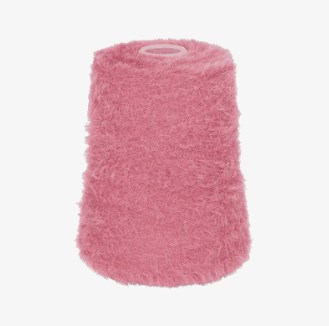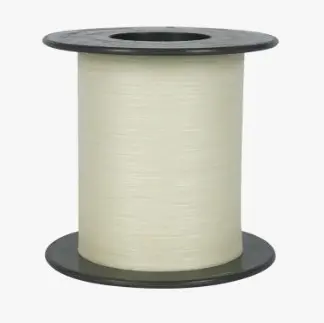In the modern textile industry, colored polyester yarn has become a key material for fabric design and functional development. With its outstanding physical properties, rich color expression, and excellent dye fastness, this yarn has found widespread application in apparel, home textiles, and industrial fabrics. With increasing consumer demand for personalized and sustainable products, colored polyester yarn, with its innovative technology and environmental advantages, is becoming a key industry development direction.
I. Definition and Characteristics of Colored Polyester Yarn
Colored polyester yarn is a chemical fiber product made primarily of polyester, imparted with a variety of colors during the spinning or post-dyeing process. Compared to traditional dyed fabrics, this yarn is more efficient and environmentally friendly to produce, while also producing a more stable color. Made primarily of polyethylene terephthalate (PET), it offers high strength, abrasion resistance, wrinkle resistance, and excellent resilience, ensuring both aesthetics and practicality in finished products.
A significant advantage of colored polyester yarn is its color consistency and color fastness. Because the masterbatch is evenly dispersed into the polymer matrix during the spinning stage, the yarn's color resists fading and maintains its vibrant visual appearance even after long-term use or repeated washing. This characteristic makes it particularly suitable for fashion apparel and home textiles, where color is critical.
II. Manufacturing Processes and Technological Advances for Colored Polyester Yarn
Colored polyester yarn can be manufactured using two main methods: solution-dyed spinning and post-dyeing. Solution-dyed spinning has become the mainstream in the industry due to its environmental and energy-saving properties. This process involves adding a specific proportion of masterbatch to the polymer melt, ensuring the color is stable before the fiber is formed, thus avoiding the wastewater and pollution issues associated with traditional dyeing processes.

Advances in materials science and equipment technology have significantly improved temperature control, filtration accuracy, and spinning speed in modern polyester yarn production lines, ensuring fiber uniformity and high quality. Furthermore, by combining with functional additives, colored polyester yarns can be enhanced with UV resistance, moisture absorption and quick drying, antistatic properties, or flame retardancy, further expanding its application range.
New micro-denier and profiled cross-section technologies enable colored polyester yarns to achieve a richer range of textures and glosses. The refractive effect on the fiber surface creates a silky, soft texture and visually enhances the fabric's depth. This technological upgrade not only increases product value but also provides designers with greater creative freedom.
III. Applications of Colored Polyester Yarn
Due to its stable performance and rich color palette, colored polyester yarn demonstrates strong application potential in a wide range of fields.
Among apparel fabrics, it is widely used in the production of sportswear, fashionable casual wear, and professional attire. The high strength and wrinkle resistance of polyester fiber ensure that clothing maintains a crisp appearance while offering excellent breathability and comfort. Especially in the sports industry, functionally modified colored polyester yarns can better meet the demands for moisture wicking, wear resistance, and durability.
In home textiles, colored polyester yarn, with its excellent color fastness and sun resistance, is a preferred material for curtains, sofa fabrics, carpets, and bedding. Its rich color gradations add a decorative and artistic touch to homes.
In the industrial textile sector, such as automotive interior fabrics, outdoor awnings, and advertising fabrics, colored polyester yarns are widely used due to their high strength and weather resistance. These yarns maintain stable performance even under prolonged exposure to light, moisture, and friction, demonstrating their excellent durability.
IV. Environmental and Sustainable Development Trends in Colored Polyester Yarns
As the global textile industry transitions toward green production, colored polyester yarns, thanks to the low-pollution nature of the solution-dyed process, have become a key example of environmentally friendly development. Traditional dyeing processes require significant amounts of water and chemical dyes, while solution-dyed technology effectively reduces wastewater discharge and energy consumption in the dyeing and finishing stages, significantly improving environmental friendliness.

Concurrently, with the maturation of recycling technology, the use of recycled polyester is becoming increasingly widespread. Reprocessing waste plastic bottles and waste fibers into colored polyester yarn not only achieves resource recycling but also meets international standards for sustainable products. These recycled colored polyester yarns rival virgin polyester in performance and exhibit more stable color.
In future development, companies will prioritize green management throughout the entire process, from raw materials to finished products. By integrating energy-saving equipment and renewable resources, they will maximize the ecological value of their products. The environmentally friendly transformation of colored polyester yarn also represents the simultaneous advancement of intelligence and sustainability in the textile industry.
Colored polyester yarn is not only a fusion of color and technology, but also a symbol of innovation and sustainability in the textile industry. From solution dyeing to functional modification, from traditional textiles to intelligent manufacturing, it is driving high-quality upgrades in the textile industry with its superior performance and rich expressiveness. With the continued deepening of green production and personalized consumption, the future of colored polyester yarn will be even more vibrant and colorful.

 English
English русский
русский Español
Español











